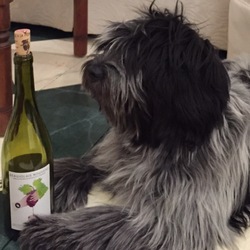Catawba
Hungry Run Wine & Spirit
Strawberry Watermelon
Fruity wine. Tastes like melted jolly ranchers — 5 years ago
Knapp
Catawba Rosé
Not a super sweet Catawba — 6 years ago
Americana Vineyards
Sweet Rosie Rosé Blend
Might be my new favorite. Tastes like concord meets Catawba. — 7 years ago
Willow Creek Winery
Pink Catawba New York
Sweet, very good carbonated as Fuzzy Cat — 5 years ago
Johnson Estate
Pink Catawba
Refreshing — 5 years ago
Ridge Vineyards
Geyserville Sonoma County Zinfandel Blend 2017
The first European grapes were planted in what is now the U.S. in the 1600s, where Spanish missionaries in New Mexico needed sacramental wine. But Phylloxera was ever-present near the eastern population centers, so the earliest American wine industries were built on hybrid grapes. Cincinnati's sparkling Catawba was America's first cult wine, followed by cultivars like Norton, Isabella, and Concord in Missouri and Virginia. The sleeping giant began to awaken in the 1850s, when Agoston Haraszthy began importing high-quality vine material to California.
It all came crashing down with Prohibition in 1920. Not only were vineyards ripped up and knowledge lost, but the American palate became soft and sweet. Low-quality fortified wine from whatever grapes were available became the standard of the American wine industry.
Things began to shift in the 1960s. Robert Mondavi brought dry table wine, varietally labeled, back to the forefront. Boutique producers like Ridge began to creep toward European quality standards. The 1976 Judgement of Paris blind tasting, a sweeping victory for the Americans, proved that the New World wine was here to stay.
(This is adapted from notes for Le Dû's Wines 'History of Wine 1453AD-Present' seminar, where this wine was poured) — 6 years ago

Hazlitt 1852 Vineyards
Red Cat Finger Lakes Catawba Red Hybrids
Extremely fruity with a strong note of melon. This wine is delectably sweet and tangy! — 5 years ago
Oliver Winery
Creekbend Vineyard Estate Bottled Catawba Rosé 2017
A nice, light, summery wine with a dry finish. Can definitely taste the peach and strawberry notes! — 6 years ago
Chepika
Catawba
2018 is banging — 6 years ago




Chad Puckett
Absolutely delicious. Fruity goodness — 2 years ago